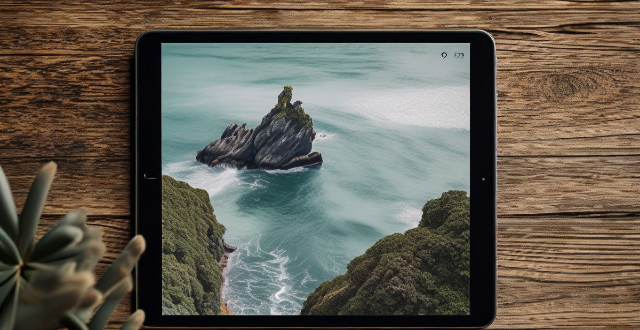To improve smartphone photography, master camera settings, To improve smartphone photography, master camera settings, itize lighting, keep the keep the lens clean, stabilize your shots, edit judiciously, experiment with angles, and practice regularly.

Tips for Taking Better Photos with a Smartphone
Capturing stunning photos with your smartphone can be an exciting and rewarding experience. Here are some tips to help you take better pictures using your mobile device:
1. Understand Your Camera Settings
- Learn the features: Familiarize yourself with your phone's camera app, including its various modes, settings, and options.
- Adjust exposure: If your photo is too bright or too dark, manually adjust the exposure by tapping on the screen or using the exposure slider.
- Use HDR mode: High Dynamic Range (HDR) mode helps capture details in both bright and dark areas of the image.
2. Master Composition Techniques
- Rule of Thirds: Imagine a grid of nine squares on your screen and position key elements along the lines or at the intersections for a more balanced composition.
- Leading lines: Use natural or man-made lines to guide the viewer's eye through the scene.
- Symmetry and patterns: Look for symmetrical arrangements or repeating patterns to create visual interest.
3. Lighting is Key
- Natural light: Whenever possible, use natural light for photography as it provides soft, even lighting.
- Golden hour: Take advantage of the golden hour (the hour after sunrise or before sunset) for warm, beautiful lighting.
- Avoid harsh shadows: Be mindful of harsh midday sunlight that can create unflattering shadows; try to shoot in shaded areas or use a diffuser.
4. Keep Your Lens Clean
- Clean your lens: Before snapping a photo, ensure your lens is free from fingerprints, dust, or smudges.
- Use a microfiber cloth: Always carry a microfiber cloth to gently wipe away any smudges without causing damage.
5. Stabilize Your Shot
- Steady your hand: Hold your phone steady or use both hands to minimize shake.
- Use a tripod: For long exposures or low-light situations, consider using a mini tripod designed for smartphones.
- Lean against something: If you don't have a tripod, lean against a stable surface like a wall or tree to stabilize your shot.
6. Edit Your Photos
- Crop and straighten: Use editing tools to crop unnecessary elements and straighten crooked horizons.
- Adjust color and contrast: Tweak saturation, contrast, and brightness levels to enhance the overall look of your photo.
- Apply filters sparingly: While filters can add character, overuse can make photos look artificial.
7. Experiment with Different Angles and Perspectives
- Get creative: Try shooting from high up, down low, or at unusual angles to add uniqueness to your photographs.
- Play with scale: Experiment with making objects appear larger or smaller than they actually are by changing your perspective.
8. Practice Makes Perfect
- Take lots of photos: Don't be afraid to take multiple shots of the same subject; this increases your chances of getting the perfect picture.
- Review and learn: After taking photos, review them and analyze what worked well and what could be improved upon.
By following these tips, you'll be able to elevate your smartphone photography skills and start capturing more impressive images wherever you go. Remember, the most important thing is to have fun and enjoy the process!